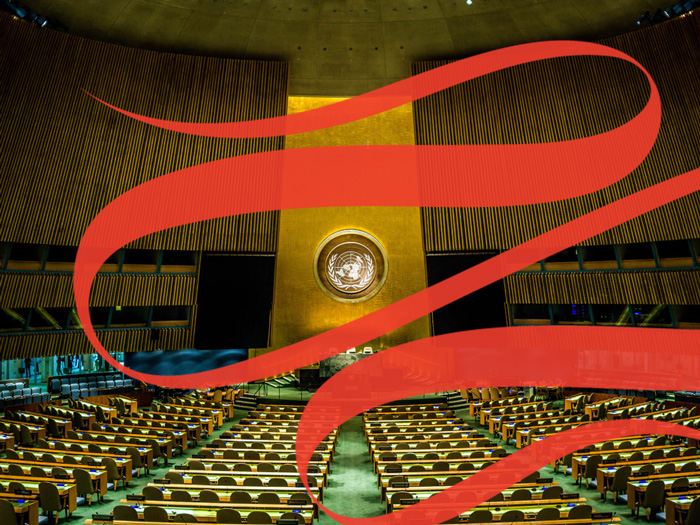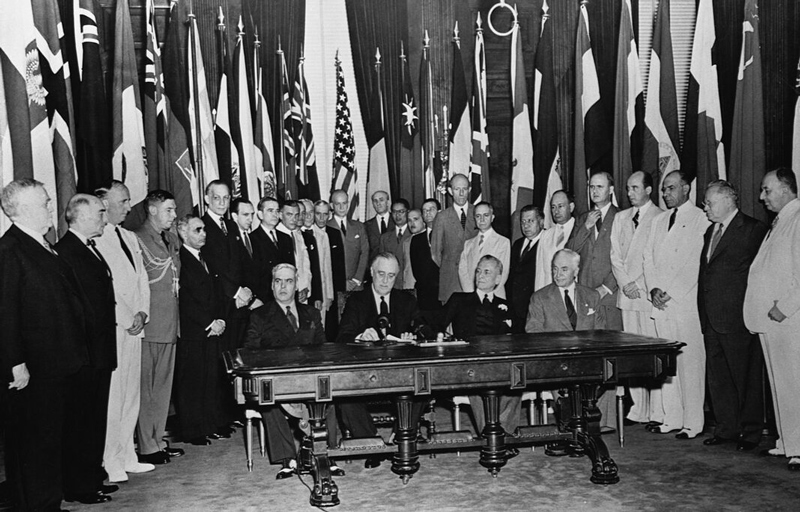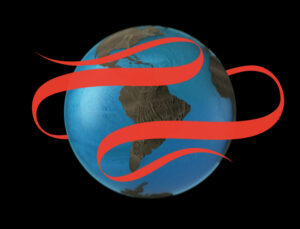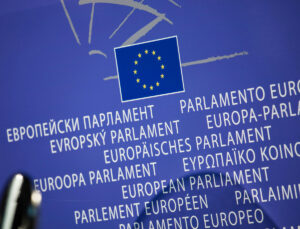
The significance of 1942
Ironically, I emphasize history, an atypical choice for a political scientist. Too much of what we do involves extrapolations from yesterday. What passes for long-range thinking extends to the next public opinion poll.
In my dotage, I have become a back-of-the-envelope historian to help combat social science’s inverse Alzheimer’s disease: preserving short-term memory but losing the context of crafted memories. The UN and multilateralism are under siege from new nationalists and populists, unaware of what preceded 1945 at the UN’s creation and what has transpired since.
There is no evidence that the existential peril from climate change and COVID-19 will lead to a similar 1815, 1918, or 1945 “moment.”
History complicates matters, so let’s begin at the beginning. The UN was not created in San Francisco in June 1945, but rather in Washington, DC, on 1 January 1942 when 26 (later 44) Allies signed the “Declaration by United Nations.” The label for the military alliance to crush fascism also entailed a parallel commitment to multilateralism as the standard operating procedure and “vision” for post-war peace and prosperity by the same name.

Last year’s 75th anniversary of the UN Charter could have led to a “back-to-the-future” realization: in many ways, the 1940s represented the pinnacle of global intergovernmental governance. Anniversaries are artificial “hooks,” but they compel recollections. The end of WWI and later WWII, like the Napoleonic Wars, led to experiments in international organization after rampant nationalism and going-it-alone were exposed as empty vessels for peace and prosperity.
There is no evidence that the existential peril from climate change and COVID-19 will lead to a similar 1815, 1918, or 1945 “moment.” It is unfathomable that international collaboration remains a hard sell amidst these menaces. Nevertheless, we are witnessing a familiar pattern: occasional, tactical, and short-term local views and responses instead of sustained, strategic, and longer-run global perspectives and actions.
So why return to 1942? Quite simply, because almost no one questions the effort made by the Allies, not even those who insist on “my-country-first”. The wartime United Nations contradicts the notion that liberalism was abandoned to confront Nazi Germany and Imperial Japan. Rather, Kantian ideals were essential to Hobbesian state survival. The combined national decisions to collaborate and construct international organizations for peace and prosperity were central to the mobilization against, and defeat of, fascism. Genuine cooperation motivated peoples, kept states allied, and won the war.
Implications for the future
Why is the 1942–1945 UN relevant for the future? When governments decide to rely on multilateral cooperation and use intergovernmental structures, they work. Those wartime actions help us realize that our current shrivelled imaginations yield notions of contemporary global governance that are second-best surrogates for robust multilateralism. If global problems require global solutions, the history of confronting life-threatening challenges points toward strengthened intergovernmental organizations, especially those of the UN system.
Thus, we must do more than rely on fleeting public spiritedness by political leaders or norm entrepreneurs, activists crossing borders, profit-seeking corporations, and transnational social networks. A global Tea Party will not do.
I have destroyed my share of trees in struggling with “global governance.” To imagine future global governance requires starting with today. For some observers, it is old wine in new bottles—an alternative expression for the actions and activities of international organizations. For others, it describes a global stage packed with ever more actors; a call to arms for a better world; or an attempt to control accelerating economic and social change. For a few, it conjures up a hegemonic plot to advance the interests of a murky global elite.
Governance without world government?
Let’s revisit the puzzle that spawned the concept, namely, how is the world governed in the absence of a world government? Both friends and foes need to explain why some— not enough to be sure—order, stability, and predictability exist, despite the lack of an overarching authority to address the planet’s woes.
Worldwide, exchanges take place without comment: mail is delivered; travelers arrive at airports, harbors, train stations and road, many crossing borders barely noticed. Goods and services move by land, air, sea; transboundary activities occur safely. In fact, international disruptions and failures are less frequent and noteworthy than in Somalia, Afghanistan, Zimbabwe, and Lebanon, that supposedly have central governments.
That largely unseen economic, political, technological, and other structures enable the provision of some global public goods is striking. Moreover, even more remarkable non-events go unremarked: children are not dying from smallpox, and no nuclear weapons have been detonated since August 1945.
Can we do better?
When proverbial Martians land on planet earth, they would observe many smooth international transactions and affirm that the world can be governed, but surely that threats to human survival can be confronted better and with greater dignity!
Our predecessors waffled on this question, but we cannot. In our struggle to formulate it, we apply “global governance.” My own definition: the sum of the informal and formal ideas, values, rules, norms, procedures, practices, policies, and institutions that help all actors—whether states, intergovernmental organizations, civil society, NGOs, transnational corporations, or individuals—identify, understand, and address transboundary problems.
RELATED
Richard Falk on the Future of International Cooperation
In this episode of the Global Governance Podcast, Augusto Lopez-Claros and Richard Falk discuss why international cooperation is vital today, COVID-19, and the future of global governance.
“Global governance” emerged from a shot-gun marriage of academic and policy responses to events in the late 1980s and early 1990s. The challenge was understanding the global forces that had led to ending the Cold War. How to identify and enhance the prospects for a better world after a half-century of East-West rivalry that had crowded out progressive global public policy initiatives. “Global governance” was imbued with possibility, as it was concerned with understanding change, complexity, and alternative futures, although born from a specific moment in time.
Towards a common understanding
In their 1992 collection Governance without Government, James Rosenau and Ernst Czempiel charted an academic pathway for thinking about how the world was ordered after the Cold War. Elsewhere, the policy-oriented Commission on Global Governance, led by Sonny Ramphal and Ingmar Carlsson, focused on normative possibilities in the emerging world order. By the 1995 publication of its report, global governance had gained traction in academic and policy circles, with the first issue in 1995 of the academic journal Global Governance.
Other works followed about growing global complexity, the management of globalization, and the challenges confronting international institutions, but without a common understanding or a clear path for inquiry. Ambiguity was a design feature.
As global governance gained traction, subtleties emerged. Some scholars built on earlier work that no longer captured the imagination of a new generation. Fast forward to Michael Barnett and Raymond Duvall’s observation that the expression has “attained near-celebrity status,” while Michael Zürn calculated that the term now appears more frequently in searches than “peace and war.”
The growth of this cottage industry was not without problems. Global governance gravitated away from ambitious efforts to appreciate complexity, change, and possibility, and focused more narrowly on collective efforts to identify, comprehend, and address problems and processes beyond the capacities of individual states in the post-Cold War era. In short, global governance became a proxy whose meaning narrowed as its usage increased.
The result was to dull the edges of its analytical utility and stifle the capacity to ask broader questions about how the world is managed, both in the past, and in the future. To focus only on burgeoning intergovernmentalism at the turn of the 21st century failed to do more than glance briefly at the significant role of imperialism, social Darwinism, and industrialization in earlier systems of global governance.
We must now move beyond a singular association with international organization in the late 20th and early 21st centuries. The post-Cold War complexities are concrete expressions of global governance at this moment, but earlier formations were different, as will be future ones, all driven by ideas, interests, and forces that vary and evolve.
Explaining the structures of global authority
To be useful, enquiries should identify and explain the contested structures of global authority at any moment and account not only for grand patterns of command and control, but also for how local, regional and national systems intersect with and push against those structures. Analyses should investigate the myriad ways that power is exercised, how interests are articulated and pursued; also the kind of ideas from which power and interests draw substance and help establish, maintain, and perpetuate systems. They should account for and probe the causes, consequences, and drivers of change and continuity, not only today but over extended periods in the past and into the future.
What is the analytical potential of global governance? Not only descriptions of the principal actors and how they interconnect, but also how particular outcomes have resulted; why and on what grounds is authority effectively or poorly exercised, and who and what has been lost or excluded.
State capabilities matter, but so too does the way formal and informal institutions mediate relations between states, and how goods and services are exchanged and managed. Questions of power are less straightforward when the numbers and kinds of actors proliferate, when states exert less control over markets, and when complex relations exist among various actors and markets.
Drawing upon the past in looking to the UN heading toward 100 leads me to lament that, for most politicians, publics and pundits, world organization is largely an after-thought, if thought at all. The challenge is revisiting the UN’s wartime origins, while re-imagining the temporal and spatial dimensions of global governance as well as its impact on the globally governed. We must better understand the possibilities, prospects, and pitfalls in today’s and tomorrow’s world order.


